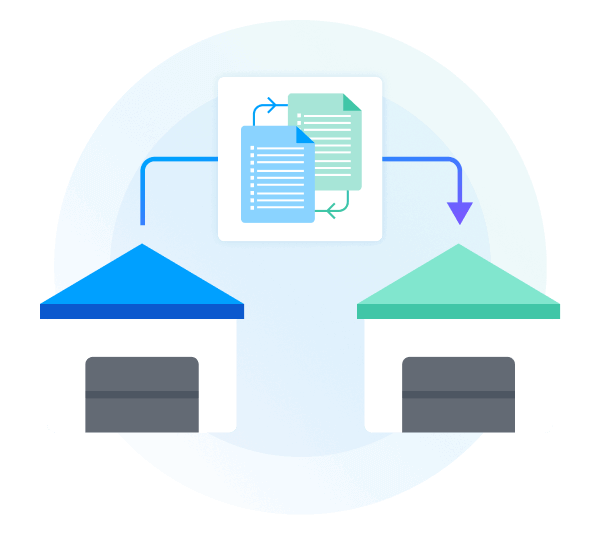EDI 940: All You Need to Know About the Warehouse Shipping Order Transaction

In the world of modern business, efficiency is king. Streamlined processes produce better outcomes. One critical tool that facilitates this efficiency is Electronic Data Interchange (EDI). Among the myriad of EDI transactions, the EDI 940 stands out as a crucial document streamlining the exchange of information in the realm of logistics and supply chain management.
What is EDI 940?
Electronic Data Interchange (EDI) is the electronic exchange of business documents between trading partners. It replaces traditional paper-based processes with electronic equivalents, significantly reducing time, costs, and errors associated with manual handling.
The EDI 940, also known as the Warehouse Shipping Order, is a transaction set used to instruct a warehouse to ship goods to a customer. It serves as a formal request from the supplier to the warehouse, detailing the items to be shipped, their quantities, destination, and any special handling instructions. The EDI 940 enables seamless communication between trading partners involved in the shipment process, ensuring accuracy and timeliness in fulfilling orders.
8 Key elements of EDI 940 form instructions
- Header information: The EDI 940 begins with header information, including the sender's and recipient's identification, transaction set control number, and dates related to the order.
- Shipment details: This section provides comprehensive information about the shipment, such as the shipment identification number, mode of transportation, scheduled ship date, and expected delivery date.
- Order information: Here, the sender specifies the details of the order, including the purchase order number, line items, product descriptions, quantities, and unit of measure. Each line item is meticulously listed to ensure accurate fulfillment.
- Destination details: The destination segment contains information about the location where the goods are to be shipped. This includes the name and address of the customer or consignee, as well as any special shipping instructions or requirements.
- Handling instructions: In some cases, specific handling instructions may be necessary, such as temperature-sensitive items or hazardous materials. This segment allows the sender to communicate any special handling requirements to the warehouse.
- Packaging information: The packaging segment outlines how the items are packaged for shipment, including container types, dimensions, and weight. This information helps the warehouse optimize loading and shipping processes.
- Payment terms: The sender may include payment terms and conditions associated with the shipment, ensuring clarity and agreement between parties regarding payment obligations.
- Notes and comments: Additional notes or comments may be included to provide further instructions or clarifications related to the order.
The benefits of using EDI 940
EDI offers a wide range of advantages for B2B communication, and the specific use of EDI 940 documents to streamline warehouse orders and logistics ensures that your organization benefits from the following:
- Improved accuracy: By eliminating manual data entry and reducing human intervention, EDI 940 transactions significantly decrease the likelihood of errors associated with traditional paper-based processes. This enhances order accuracy and reduces the risk of shipment discrepancies.
- Faster processing times: EDI 940 transactions expedite the exchange of information between trading partners, leading to faster order processing and fulfillment. This accelerated cycle translates to shorter lead times, improved customer satisfaction, and enhanced operational efficiency.
- Cost savings: The automation of processes through EDI results in cost savings for businesses. By minimizing paper usage, reducing labor hours, and mitigating errors, companies can realize substantial cost efficiencies across their supply chain operations.
- Enhanced visibility: EDI provides real-time visibility into the status of orders and shipments, allowing businesses to track inventory levels, monitor delivery progress, and proactively address any issues that may arise. This increased visibility enables better decision-making and fosters collaboration between trading partners.
- Scalability and compliance: EDI 940 transactions are scalable and adaptable to evolving business needs and industry standards. Moreover, adherence to EDI standards ensures compliance with requirements set forth by regulatory bodies and trading partners, enhancing trust and reliability in business relationships.
- Competitive advantage: Leveraging EDI 940 capabilities equips businesses with a competitive edge in today's fast-paced marketplace. By optimizing supply chain processes, reducing costs, and improving customer service levels, companies can differentiate themselves and position for long-term success.
The EDI 940 document plays a vital role in facilitating seamless communication and efficient order fulfillment within the supply chain. Its standardized format, coupled with the automation and accuracy it offers, empowers businesses to streamline operations, reduce costs, and deliver exceptional customer experiences. As technology continues to advance, embracing EDI becomes increasingly indispensable for businesses striving to thrive in a dynamic and competitive landscape.
How CData Arc simplifies logistics worfklows
CData Arc offers robust integration capabilities, allowing seamless connectivity between various business systems, applications, and EDI platforms. It enables the integration of EDI 940 data with enterprise resource planning (ERP) systems, warehouse management systems (WMS), transportation management systems (TMS), and other critical business applications. This integration streamlines data flow across different systems, ensuring synchronization of information and facilitating efficient order processing and fulfillment.
CData Arc simplifies the process of data transformation and mapping, enabling businesses to convert EDI 940 data into formats compatible with their internal systems. It provides intuitive tools and graphical interfaces for mapping EDI fields to corresponding fields in target systems, eliminating the need for manual data manipulation and reducing the risk of errors. This capability ensures data accuracy and consistency throughout the order fulfillment process, enhancing operational efficiency and customer satisfaction.
If you are interested in trying out the powerful combination of CData Arc and EDI 940 documents for yourself, you can begin building streamlined B2B integration workflows immediately with a free trial of CData Arc.
Try CData Arc today
Get a free 30-day trial of CData Arc to experience the difference EDI automation can make for your business.





